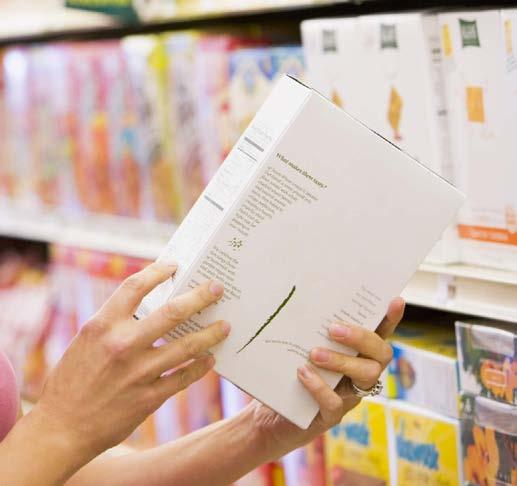
3 minute read
Paper… the new Plastic?
from SPN June 2023
by spnews.com
Packaging plays an important role in our daily lives, from providing protection for foods, drinks, medicines, and other goods, to giving products an added visual appeal in the marketplace. Today’s packaging serves a plethora of purposes.
From the desk of Steve Gislam
Advertisement
However, the type of packaging material used has had a significant impact on the environment. In recent years, the increased focus on sustainability and eco-friendliness has led a large number of companies and consumers alike to make the shift towards more environmentally friendly packaging solutions. One of these is paper. Biodegradable, recyclable and cost-effective, paper packaging is a tried and tested alternative to plastic.
The Pros
Paper has several advantages over other packaging materials. One of these is its inherent eco-friendliness. Unlike, for example, plastic, which takes hundreds of years to decompose, whilst paper is biodegradable, breaking down naturally in a matter of weeks. Paper is also a renewable resource and, if managed correctly, forests can be regrown and harvested sustainably.
Paper packaging is also recyclable, and can be recycled multiple times, thus reducing the amount of waste that ends up in landfills. Recycling paper also helps to conserve natural resources, such as water and energy, that are used in the manufacture of new paper.

Paper’s cost-effectiveness also makes it an attractive option for businesses and consumers alike. The cost of producing paper is relatively low, and it is abundance and therefore widely available. As a result, paper can be an affordable alternative packaging material. Despite being a lightweight material, paper packaging is also durable. It can be used to package a wide range of products, from delicate electronics to heavy machinery, and can be designed to withstand the rigors of shipping and handling. Additionally, paper packaging can be designed to be moisture-resistant, making it suitable for food items.
The Cons
Paper as a packaging material is, however, not without its drawbacks. One major disadvantage is its limited durability in comparison to other materials such as plastic or metal. Paper is susceptible to tearing and is easily damaged by moisture, which can compromise the integrity of the product it contains.
Also, paper is not suitable for all products. For example, paper packaging may not be suitable for products requiring airtight or waterproof packaging, such as certain types of food, pharmaceuticals, or chemicals. Additionally, certain types of paper packaging are not strong enough to withstand the weight of heavy or bulky items. Paper also requires significant amounts of energy and resources, like water and electricity, to produce..
Moreover, the process of recycling paper is not without its challenges. Paper recycling also requires a significant amount of energy and resources. Also, not all types of paper can be recycled, and contamination with other materials, such as plastics or food waste, can reduce the quality of the recycled paper.
Lightweight and durable
Paper packaging takes a number of forms, such as cardboard boxes, bags, and wraps, and its suitability depends on the product being packaged.
Sturdy and customisable, boxes are a popular type of packaging used for shipping and storing products. They can also be designed to be moisture-resistant, making them suitable for packaging food items. However, they’re suitable for all products, as they can be bulky and may not provide sufficient protection for delicate or valuable items. Paper bags are lightweight and used for a wide range of products. They’re also biodegradable and recyclable, making them an eco-friendly option. However, they are not as durable as plastic bags and tear easily when wet or overloaded.

Innovations in Paper Packaging

Consumer demand for eco-friendly packaging is growing rapidly, and paper packaging is at the forefront of this trend. As the public becomes more aware of the environmental impact their purchases can have, there is a rapidly growing demand for sustainable packaging solutions that are biodegradable, recyclable, and made from renewable resources.
Advances in technology are also driving innovations in paper packaging. For example, digital printing technology has created a small revolution, allowing for more complex and high-quality designs, which can enhance the brand appeal and consumer experience. Innovations such as advanced sorting systems and improved de-inking processes are increasing the efficiency of paper recycling. This allows for higher-quality recycled paper, which can be used to produce new packaging materials while maintaining their performance characteristics. Furthermore, the development of compostable paper packaging, made from biodegradable materials, offers a viable end-of-life solution that complements existing recycling efforts.
Paper’s resurgence
Paper packaging has many advantages over the alternatives, including its biodegradability, recyclability, and renewable source material. It is a popular choice for businesses and consumers who are looking for eco-friendly packaging solutions. While it can also have some disadvantages, such as limited durability and challenges with recycling, advancements in technology and sustainable sourcing practices are driving innovation in paper packaging, making it more versatile, functional, and environmentally friendly.










